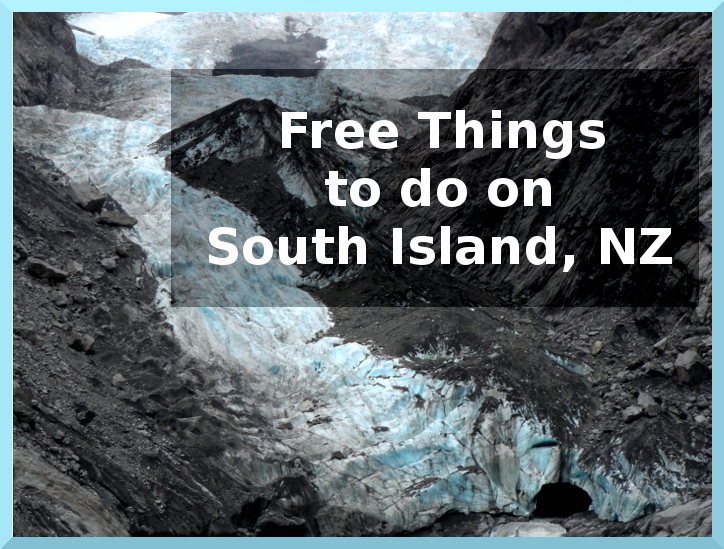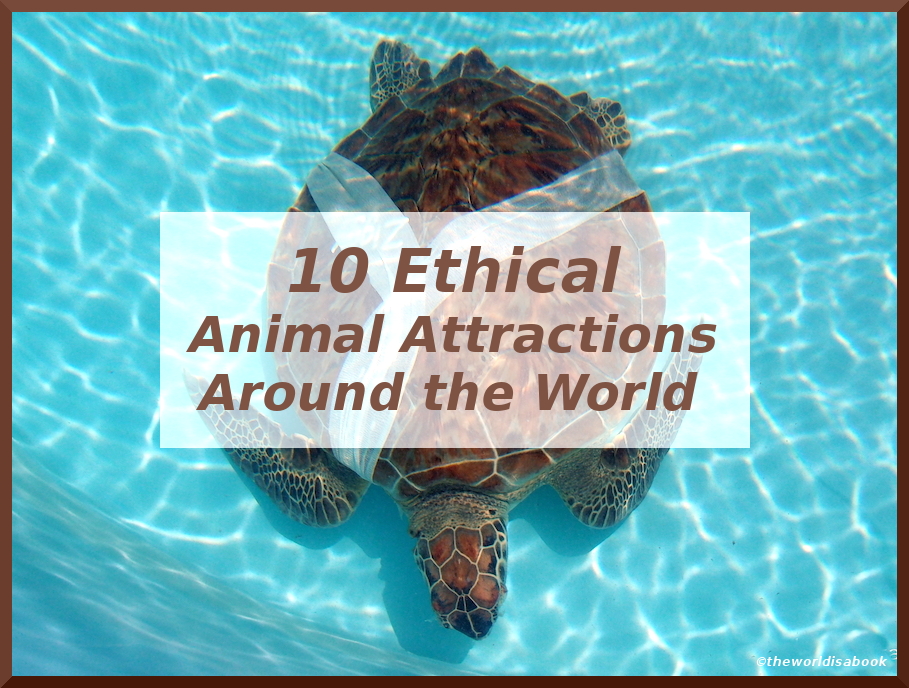6 Free Places toSpot Wildlife in New Zealand
03 October 2017 | Mri Grout - A Lifelong Vagabond
The Caitlins region is well known as the place to be if you want to spot a variety of wildlife in New Zealand for free. It's located on the south coast of the south island, but this being a country prided on its natural beauty and inhabitants, it's far from being the only reliable spot where you can see New Zealand icons well and truly in the wild. Just remember to not get too close to wildlife and definitely bring a camera that can do action shots as you visit each one of these 6 places to spot wildlife in New Zealand!
Thanks for visiting Lifelong Vagabonds! By viewing our ads you're helping us share more free free things to do in New Zealand!
1. Spot Wild Keas at Otira Viaduct Lookout
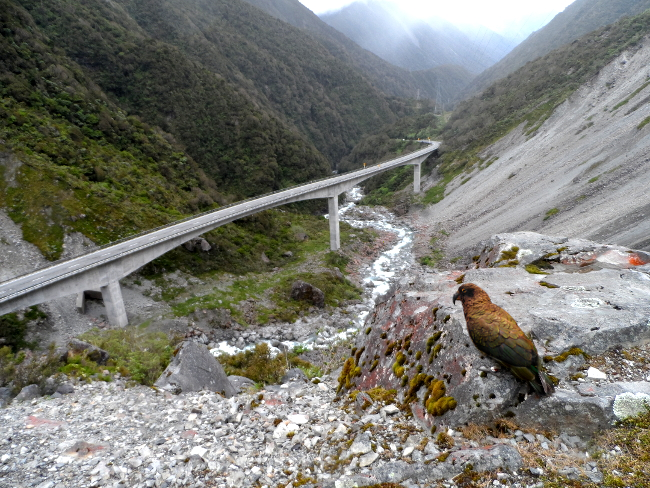
As you head out from Christchurch and towards Arthur's Pass, you'll come across an amazing viewpoint overlooking the Otira Viaduct, which is itself a majestic design of engineering. The turn is directly before the bridge on the right-hand side and up a small hill, so if you end up on the bridge, you've gone too far. There's a small gravel lot on top that's teaming with wild keas - the endangered New Zealand parrot that's unfortunately most known for eating rubber. Now this might sound like the spotting of a bigfoot - a hilarious tale locals trick travelers with, but we can assure you that it's all too real and our van has the scars to prove it. The rubber has a chemical compound that makes them high and then eventually, dead. So when coming to see the wild keas at Otira Viaduct Lookout, please make sure to keep a watchful eye on your car. However, outside of this sad fact, keas are also well known for their high intelligence and playfulness and have even been caught rolling snowballs on tape!
2. Spot Wild Glowworms Inside Clifden Cave
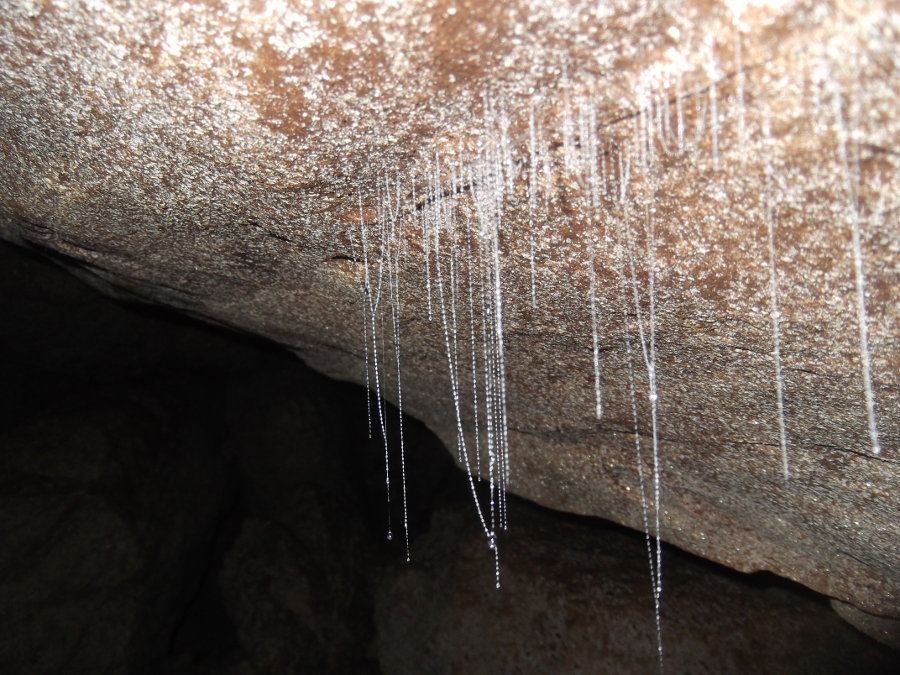
Unlike worms, glowworms have legs and aren't really worms at all. Unlike fireflies, New Zealand glowworms (scientifically known as arachnocampa luminosa) do not glow for the sole purpose of attracting a mate. Unlike spiders, their 'webs' are spun in a straight line on the ceiling with the catchy bits hanging down to form a sort of 'posh necklace of gems,' which they use to catch any flies or other insects, including other glowworms. However, instead of leaving their next meal mostly to chance, the New Zealand glowworm has evolved to make their tails glow and as everyone knows, bugs are obsessed with light - even cave bugs. They then simply position themselves at the end of said web and start attracting their prey. This, of course, makes finding them super easy for us humans - just venture into Clifden Cave and turn off all light. Then look up at the glowing green 'stars' above you. Once you have one picked out, feel free to check out their cool looking webs once the light is back on. If you're wondering how they manage to glow, they give off a chemical that when reacted with oxygen produces light.
3. Spot Wild Fur Seals & Sea Lions at Cannibal Bay
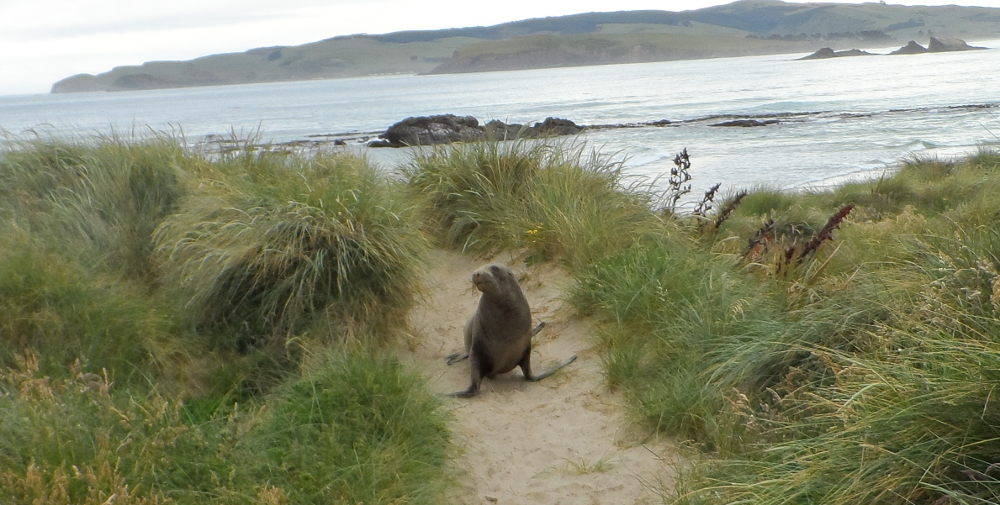
Another misnomer, Cannibal Bay hasn't had a single recorded case of human cannibalism. Rather, it was named so due to the findings of some human bones during exploration. However, if you visit Cannibal Bay today, you'll find a stunning beach spotted with fur seals and sea lions as they sunbath on the shore and hunt in the cold waters of New Zealand's southern sea. Sometimes you have to walk a few kilometres to spot them as they seem to favour the larger rocks further down and when the tide comes in, it covers the beach so make sure you have plenty of time to return before high tide. And NEVER get between a fur seal and the sea as they'll barrel you down if panicked nor get too close to sea lions as they fight more than take flight when threatened. The easiest way to tell fur seals and sea lions apart is to simply not bother. Just treat them all as a terrifying sea lion and nervous fur seal hybrid for the safest of measures. Especially since Google has just told us that fur seals are actually a type of sea lion. So now the sign at Cannibal Bay doesn't make sense given it had pictures to discern between the two and yet it does make sense as what we thought was a fur seal definitely acted like an aggressive sea lion...
Say thanks for this free travel information on free places to spot wildlife in New Zealand by booking your next trip through our affiliation link below at no extra cost to you!
Booking.com4. Spot Wild Penguins at Curio Bay
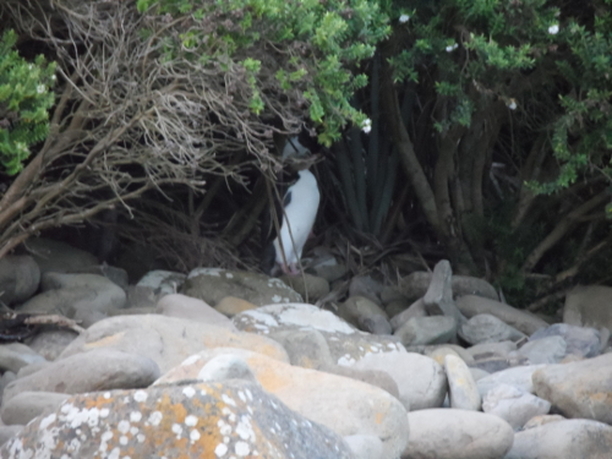
165 million years ago, Curio Bay was covered by thousands of ancient conifers playing home to the dinosaurs. Today, however, all tht remains of this Jurassic forest are fallen over fossilised tree trunks that many travelers will unknowingly overlook in their search for the endangered yellow-eyed penguin. For it's off these shores where the elusive animals hunt during the day and on these shores where they return to their nests at night. Their short, but rocky hike up to the shelter of the bushes is an incredible sight that's hard to believe without witnessing it for yourself. Who knew that penguins, with their "bound" feet, lack of legs, and wobble-like nature could walk so far and hop up something so tall (in relation to them of course)! Due to the penguins status of endangerment, a ranger is on guard here at all times and a rope barrier is laid out on the floor. This is to give the critters enough space for them not to feel threatened nor too crowded by insensitive tourists. And even though I would advise bringing binoculars to spot wild penguins at Curio Bay, this place actually allows one of the closest viewings to these majestic creatures of the sea.
5. Spot Wild Albatross on Otago Peninsula
The Royal Albatross has only one known mainland breeding colony in the world and that site is proudly situated (and fiercly guarded) at the end of Otago Peninsula. Nevertheless, visitors can always try their luck at spotting the rare albatross flying overhead as they treat themselves to a picnic in the parking lot of the Royal Albatross Centre. Parking is free and the views, as in seemingly everywhere in New Zealand, are gorgeous as it looks directly out to sea. The chance of spotting an albatross flying overhead, however, is honestly quite small and you can wait all day without seeing one. If this is the case, you MUST pay a ridiculous fee to go into the Royal Albatross Centre in order to see one. DO NOT attempt to sneak in as New Zealand rangers DON'T mess around and take their job of charging high fees to visitors VERY seriously!
6. Spot Wild Seal Pups at Ohau Waterfall
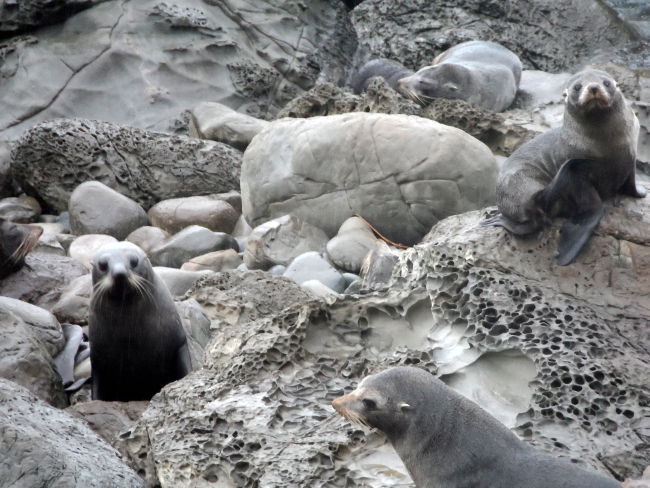
Every year through the southern winter months of June through August, an approximate 3000 seal pups are dropped off by their parents at Ohau Waterfall. Here they wait for their mums and dads to return after a day's hunt, but in the meantime they act like any children would - frollicking and playing in the cool waters of this gorgeous river. A river that is easily accessible on foot, being a mere 280 metres from the carpark located about 27km north of Kaikoura. There also aren't any barriers between you and the seal pups so you can get fairly close to these dogs of the sea. HOWEVER, please DO NOT get too close! They will bite you and you could make them sick even if you seem perfectly healthy!!! If you arrive a few weeks to about a month before June, you might still catch them sunbathing and swimming with their parents right off the side of the road. EDIT: After an earthquake in 2016, their usual waterfall nursery and sunbathing rocks have been destroyed. However, despite concerns of their future absense, the seals have simply started nursing a 100 metres or so north of their old spot. The boulders here are more stable, but nevertheless work is going underway to clear the waterfall so that seals may once again be spotted at Ohau Waterfall.
If you liked '6 Free Places to Spot Wildlife in New Zealand', then you might also like these other free attractions in Oceania:
Travel Tip #4

6 Free Places to Spot Wildlife in New Zealand comments:

